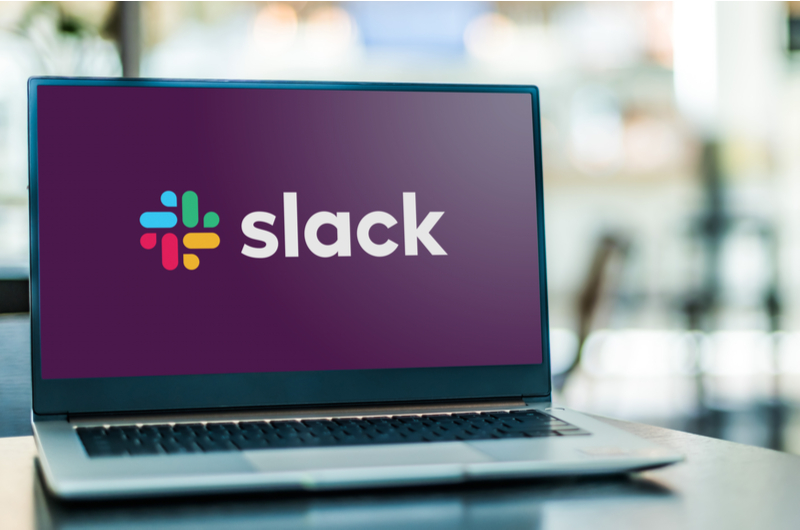Compare The Best In Office Communication
Do you need to upgrade your office technology to include the latest communication apps? Use this quick overview to select the best office communication app for your business.
Five years ago communication apps were considered a fad. Afterall, everyone worked in the same office, gathered around the same watercoolers, and attended the same in-person meetings. Now, that is far from the truth. Team communication apps have become THE modern office. As a result of forced remote working situations, office communication apps surged into the mainstream. It also forced innovations in that industry that offices are benefiting from now. Shared workspaces evolved so that now that also includes the virtual workspace.
But the virtual workspace has so many options to choose from. How do you know if a platform is right for you? Should you use the free version (they almost all have them), or should you opt for the paid versions? And is there an advantage to automating processes that used to be handled by employees? Read on to discover the answer to these questions as well as review a list of the top go-to office communication tools on the market. 
Advantages of Utilizing Communication Software in the Office
Part of the popularity of communication apps and software is the ability to remain connected and thus collaborate better. This makes for greater efficiency as most apps allow for productivity tracking, alert those further down the pipeline to predict when their part of the project will be ready, and it offers a way for others to seamlessly view relevant conversations. The sheer amount of paper saved is phenomenal when you consider the reams of paper, post-its, and notepads that no longer have to be used to send a simple memo or write a reminder. Documents can be shared without ink hitting paper until the final product is finished. So, it is not only good for boosting creativity and productivity, it is also good for the planet.
Free Interoffice Apps VS Paid Communications Apps
Almost all of the best office communication apps also offer a free version for you to try out. This is good in one respect because it allows you to take it for a test run without investing any money. But, in the long run it is only giving you an appetizer, and not the entrée. To truly evaluate a platform you really should invest for at least a couple of months in one of the paid tiers for the platform. Why? Because many of the bells and whistles, that are actually important to most, are simply not made available on the free version. When would a free version be advisable? If you are a solo act, or own a small business with few to no employees, then you may get away with just the free version. But once you start to grow, you will find you have quickly outgrown the freebies.
Best Office Communication Apps
Keeping the lines of communication open is crucial in a business. This allows for deadlines to be met, and accountability to still exist even when working remotely. Emails used to be the go-to method for office communication, but it has quickly become clunky if the threads are multiple emails deep. Often workers miss crucial emails because they have become buried in an email thread that includes 50 or more emails. It just is not as efficient as it once was. Enter office communication apps that allow for so much customization you are going to wonder why you waited to adopt them. The following are the top office communication apps with great reviews and decent pricing.
Slack
What it is: Slack was one of the first kids on the block to directly challenge Microsoft Teams. They offer much of the same features as Microsoft Teams, but are easier for the average non-tech person to use.
Best Features: Channels are created for dedicated chat groups focused on departments, or teams or specific projects. That way nothing is lost. It also allows for collaboration across multiple organizations, with a robust security feature that allows Admins to decide what proprietary information is shared outside of the business. Slack integrates easily with audio, screen sharing and video platforms for meetings. It is compatible with all mobile platforms.
Worst Features: The free version does not allow group calls, only saves the first 10,000 messages.
Cost:
-
Tier 1: $6.67 per month.
-
Tier 2: $12.50 per month.
-
Tier 3: Customized pricing based on size.
RingCentral
What it is: RingCentral is an app that integrates messaging, video abilities as well as phone all into one seamless platform.
Best Features: RingCentral allows offices to streamline their workflow with file sharing, team messaging and task management. It also allows the user to create a virtual meeting room that allows hybrid workers to stay connected even when not in the office.
Worst Features: It requires a contract, and is not available in all countries yet.
Cost: The basic plan starts at a little less than $20 a month, with standard at $27.99. Premium and Ultimate packages are $34.99 and $49.99 respectively.
Discord
What it is: Discord was originally built for gamers, it has fully expanded to embrace all online communities. It's always on audio makes it great for business chatting between team members and departments.
Best Features: Audio quality is some of the best on the market, allowing for remote work collaboration on shared documents. Integrates with many popular apps.
Worst Features: Used mostly for online communities, such as those built from Instagram, Twitter or Facebook. You cannot record conversations for sharing later.
Cost: Most free, but the paid version for $9.99 (called NITRO) allows you to integrate more business apps and offers more storage space.
Monday.Com
What it is: Self-proclaimed Swiss Army knife of the project management realm, Monday allows for versatile management for projects, as well as a customer relationship management (CRM).
Best Features: It is scalable. Start with the free version, then easily upsize to each tier as needed. Monday focuses on processes, not tasks, which facilitates efficiency and productivity. Visual displays of these processes allow workers to see the status of any project quickly.
Worst Features: Monday.com takes a while to fully understand. It is so vast with so many offerings and abilities that it is worth taking the time to go through all of the tutorials.
Cost: $24 gets you started with the basic (first tier beyond free), then standard plans start at $30. Larger enterprises may need the pro package for $48 a month.



